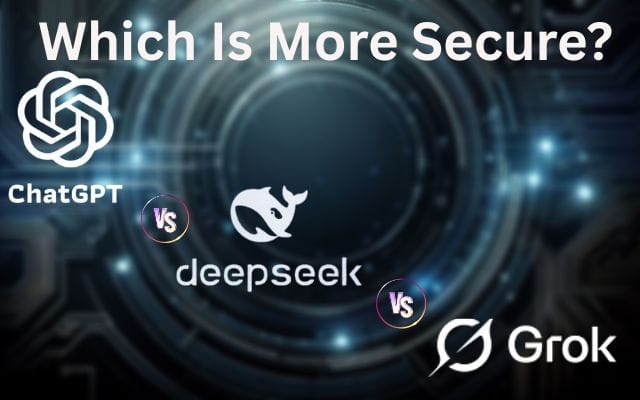The surge in cybercrime has changed how executive protection is approached. No longer confined to physical security measures and VIP escorts, today’s threats target the digital traces of high-ranking leaders.
C-suite executives—CEOs, CFOs, CIOs, and others—have become high-value targets for threat actors leveraging AI-powered tactics to infiltrate networks, extract sensitive information, and orchestrate reputational sabotage.

The question is, what makes these C-suite executives so attractive to cybercriminals? Their access. Their influence. And their often-overlooked vulnerabilities in World Wide Web.
As artificial intelligence (AI) evolves, so do the methods of attack. From deepfake impersonations to social engineering, AI threats to executives are growing more personalized, more scalable, and damaging.
This shift demands a new kind of response—executive protection from digital threats that blends cybersecurity intelligence, proactive monitoring, and strategic resilience planning.
In this article, we will delve into the evolving nature of C-suite cybersecurity threats, the rise of AI-powered executive threats, and how organizations can stay ahead by implementing digital security for C-suite leaders.
Table of Contents
Why C-Suite Executive Are Being Targeted
C-suite leaders have always been high-value targets. Their access to sensitive information, authority over corporate assets, and public profiles make them ideal prey for cyber attackers.
But now, with AI in the mix, these threats are becoming more advanced, targeted, and frequent.
Traditional methods of executive protection are rapidly being outpaced. Cybercriminals now use AI to automate reconnaissance, clone voices, forge emails, and even manipulate video.
These AI-powered executive threats mean attackers no longer need months to craft elaborate schemes—they can launch devastating digital attacks in minutes.
Understanding the Scope of AI Threats to Executives
AI threats to executives range from phishing campaigns driven by machine learning to deepfake videos capable of misleading entire teams.
Imagine a CEO’s voice used in a fake phone call authorizing a wire transfer. Or a video of a CFO appearing to make controversial statements that impact stock prices.
C-suite cybersecurity threats are evolving. Cybercriminals are now:
- Using AI to scrape social media for personal data to tailor phishing attacks
- Deploying bots to simulate behavior and gain insider access
- Creating deepfake audio and video content for impersonation
- Leveraging machine learning to identify digital vulnerabilities faster than ever
The Dark Web: A Marketplace for Executive Data
The Dark Web has become a hotbed for buying and selling executive credentials, personal data, and company secrets. Executive cyber protection must now include monitoring the dark web for potential threats.
Cybersecurity firms are uncovering thousands of compromised executive credentials monthly.
These details can lead to identity theft, blackmail, or sophisticated spear-phishing attacks. Protecting executives from AI threats requires 24/7 monitoring and swift response protocols.
Why Digital Security for C-Suite Leaders is Essential
The consequences of not having digital security for the C-suite can be disastrous. Financial loss, brand damage, and legal complications are only the beginning.
CEOs, CFOs, and other executives represent not just leadership but the public face of a company.
Protecting their digital presence is protecting the organization itself.
Key areas of concern include:
- Personal email accounts and communication apps
- Home networks and connected devices
- Travel data and location sharing
- Family member security (who may be targeted as a backdoor)
Solutions: How to Stay Ahead of AI-Powered Executive Threats
Protecting executives from AI threats requires a combination of technology, policy, and training. Here are some actionable solutions:
- Dark Web Monitoring: Regular scanning for compromised data, impersonation attempts, and threats against executives.
- AI-Driven Security Platforms: Tools that use AI to detect anomalies in real time, protecting executives from advanced threats.
- Digital Hygiene Training: Educating the C-suite and their families about secure online behavior.
- Voice & Video Verification: Introducing multifactor authentication that includes biometric checks.
- Secure Communication Channels: Encrypted platforms for executive-level discussions.
- Remote Work Security Policies: Ensuring executives have secure home setups, including VPNs and firewalls.
CEO Cyber Attack Protection: The Role of Cybersecurity Teams
Cybersecurity teams must adopt a more personalized approach when protecting the C-suite. CEOs and other leaders operate differently than the rest of the workforce. Their routines, visibility, and risk levels are unique.
Dedicated threat analysts, custom alerts, and tailored risk assessments are crucial. Cybersecurity isn’t just an IT issue; it’s a leadership priority.
A Culture of Digital Vigilance
Creating a culture of awareness is key to preventing executive-targeted attacks. Companies should:
- Conduct regular cyber drills focused on C-suite scenarios
- Develop a crisis response plan for executive impersonation incidents
- Offer cyber concierge services for high-risk executives
This culture should extend beyond the office. Personal protection and executive security in the digital age must follow leaders wherever they go.
The Future of Executive Protection: AI vs AI
As attackers use AI to scale and personalize attacks, defenders must use it to anticipate and counter them. The future lies in AI-powered defense systems that evolve as fast as threats do.
Expect to see:
- Predictive threat modeling using AI
- Behavior-based anomaly detection
- AI-driven forensic analysis after breaches
Executive protection from digital threats is heading into its most dynamic phase yet.
Are You Protecting Your Leadership Team?
Executive protection from digital threats isn’t about fear—it’s about preparation. The C-suite is being specifically targeted by increasingly intelligent, automated, and covert threats.
So ask yourself: Is your organization equipped to handle AI-powered executive threats? Are you monitoring the dark web? Are your leaders trained to spot deepfakes?
It’s time to make executive security in the digital age a top business priority.
Protect your C-suite. Stay ahead of the threats. And lead with confidence in the age of AI.


